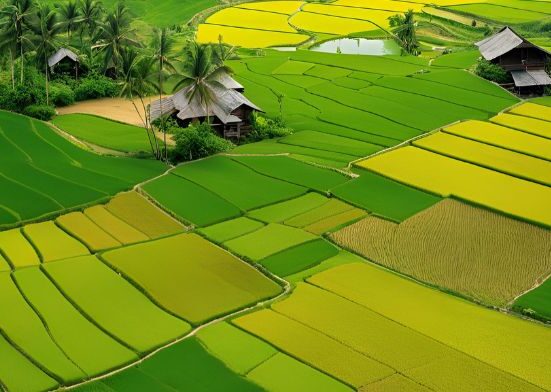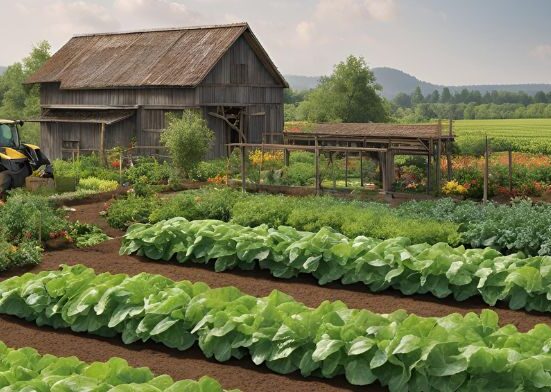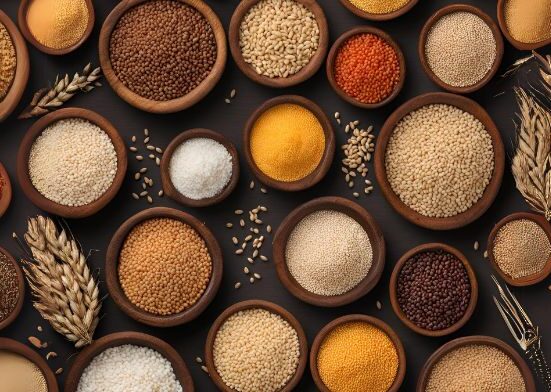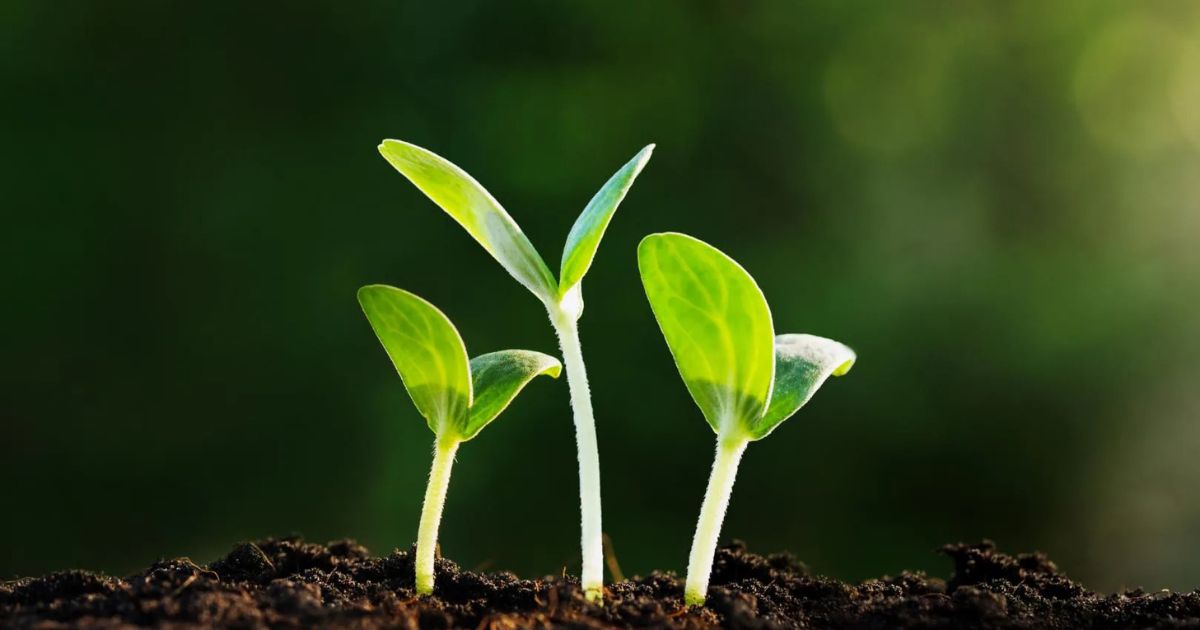Agriculture, often described as the backbone of human civilization, is the foundation upon which societies have been built and sustained for millennia. From the earliest days of human history, when nomadic tribes transitioned to settled farming communities, agriculture has played a pivotal role in shaping economies, cultures, and environments. It is not merely the act of cultivating crops or raising livestock; it is a complex, dynamic system that supports life, drives economic development, and fosters global interconnectedness. This essay explores the multifaceted importance of agriculture, highlighting its critical role in sustaining life through food security, supporting financial stability, preserving environmental balance, and fostering cultural and social development. By examining these dimensions, we can better appreciate agriculture’s indispensable contributions to humanity and the planet.
Historical Perspective of Agriculture
Agriculture’s origins can be traced back over 10,000 years to the Neolithic Revolution, when humans transitioned from a nomadic hunter-gatherer lifestyle to settled farming communities. This pivotal shift allowed humans to produce surplus food, which in turn supported population growth, the development of towns and cities, and the evolution of complex societies. Early civilizations such as Mesopotamia, Ancient Egypt, and the Indus Valley thrived because of their advanced agricultural systems. Crops like wheat, barley, rice, and maize became staples that fueled the rise of empires and facilitated trade why is agriculture important in networks.
Over centuries, agriculture evolved alongside human ingenuity. The introduction of tools like the plow, irrigation systems, and crop rotation techniques revolutionized productivity. The Agricultural Revolution of the 18th and 19th centuries, particularly in Europe, brought mechanization, selective breeding, and chemical fertilizers, laying the foundation for modern agriculture. This historical trajectory highlights that agriculture has always been intertwined with human progress and economic development.
Agriculture as the Foundation of Food Security
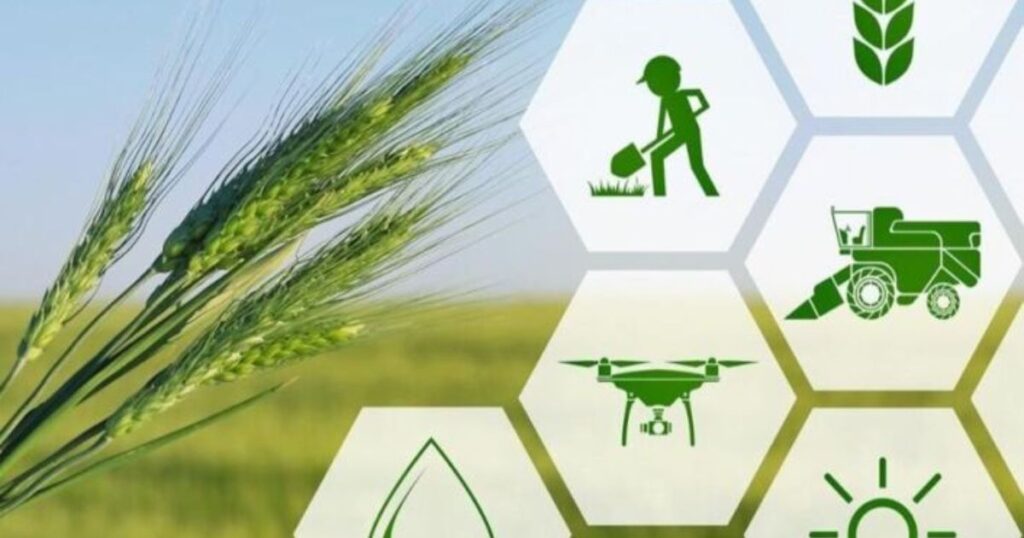 Agriculture is the cornerstone of global food security, ensuring a reliable supply of nutritious crops, livestock, and resources that sustain human life. By cultivating the land and raising animals, agriculture provides the essential foods that form the basis of diets worldwide. Beyond production, it supports livelihoods, rural development, and economic stability, making it vital to both individuals and nations.
Agriculture is the cornerstone of global food security, ensuring a reliable supply of nutritious crops, livestock, and resources that sustain human life. By cultivating the land and raising animals, agriculture provides the essential foods that form the basis of diets worldwide. Beyond production, it supports livelihoods, rural development, and economic stability, making it vital to both individuals and nations.
Modern agricultural practices, combined with traditional knowledge, help increase yields, preserve biodiversity, and adapt to climate change challenges. Without agriculture, societies would struggle to meet growing population demands, combat Hunger, and achieve sustainable development. As the foundation of food security, agriculture remains central to human survival, community well-being, and a healthier, more why was agriculture important resilient why is ag important cash crops future.
Ensuring Nutritional Needs
At its core, agriculture is the primary source of food for the global population, which exceeds 8 billion people as of 2025. The cultivation of crops such as rice, wheat, maize, and legumes, alongside livestock rearing for meat, dairy, and eggs, provides the essential nutrients required for human survival. Without agriculture, the production of sufficient food to meet the caloric and nutritional demands of humanity would be impossible.
For instance, staple crops like rice and wheat account for a significant portion of global caloric intake, particularly in developing nations where plant-based diets benefits of agriculture what is agriculture dominate. Agriculture also supports dietary diversity, which is critical for addressing malnutrition. Beyond staple crops, farmers grow fruits, vegetables, and nuts that supply vitamins, minerals, and antioxidants.
Addressing Global Hunger
Despite significant advancements, why is farming important global Hunger remains a pressing challenge. According to the Food and Agriculture Organization (FAO), approximately 9.8% of the worldwide population—around 783 million people—experienced undernourishment in 2022. Agriculture is the cornerstone of efforts to eradicate Hunger, as it directly influences food availability and affordability. Investments in agricultural productivity, such as improved seed varieties, irrigation systems, and mechanization, have significantly increased crop yields over the past century, enabling countries to feed growing why agriculture important populations.
However, challenges such as climate change, land degradation, and unequal access to resources continue to threaten food security. Sustainable agricultural practices, including crop rotation, organic farming, and agroforestry, are vital for maintaining soil fertility and ensuring long-term food advantages of agriculture Sustainable Agriculture production.
Food Security in Crisis Situations
Agriculture’s role in food security becomes even more pronounced during crises, such as natural disasters, conflicts, or pandemics. Localized food production reduces dependence on global supply chains, which can be disrupted during emergencies. For example, during the COVID-19 pandemic, countries with strong agricultural sectors were better equipped to maintain food supplies when international trade faced restrictions. Community-based farming initiatives, such as urban gardens and cooperative farms, also play a crucial role in ensuring food access during crises, particularly in urban areas where populations are dense and food distribution what is the importance of agriculture systems may falter.
Economic Contributions of Agriculture
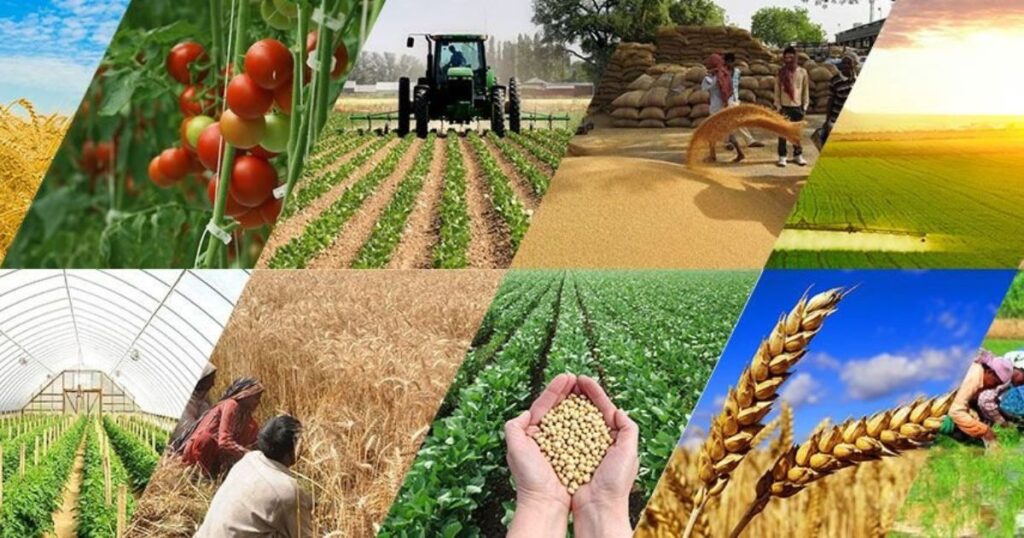 Agriculture is a cornerstone of economic development, providing food, raw materials, and employment opportunities for millions worldwide. It sustains rural livelihoods, supports agribusiness, and drives trade through exports of crops and livestock. By supplying industries with essential raw materials such as cotton, sugar, and grains, agriculture fuels the manufacturing and processing sectors. It also stimulates transportation, storage, and retail markets, creating a ripple effect across economies.
Agriculture is a cornerstone of economic development, providing food, raw materials, and employment opportunities for millions worldwide. It sustains rural livelihoods, supports agribusiness, and drives trade through exports of crops and livestock. By supplying industries with essential raw materials such as cotton, sugar, and grains, agriculture fuels the manufacturing and processing sectors. It also stimulates transportation, storage, and retail markets, creating a ripple effect across economies.
In many developing nations, agriculture is a major contributor to GDP and a vital source of foreign exchange earnings. Beyond direct production, agricultural innovations improve productivity, reduce poverty, and enhance food security. As a stabilizing force, agriculture not only feeds populations but also strengthens economic resilience and long-term growth.
Driving Economic Growth
Agriculture is a cornerstone of economic development, particularly in low- and middle-income countries where it accounts for a significant share of gross domestic product (GDP). In sub-Saharan Africa, for instance, agriculture contributes an average of 15-20% to GDP and employs over 50% of the workforce. By producing raw materials, generating employment, and fostering trade, agriculture drives economic growth and supports importance of agric livelihoods.
In rural areas, where poverty is often concentrated, agriculture serves as a primary source of income. Smallholder farmers, who cultivate small plots of land, rely on agriculture for their livelihoods, selling surplus produce in local markets or to larger supply why agriculture is important chains.
Employment and Livelihoods
Agriculture is one of the largest employers globally, particularly in developing nations. According to the International Labour Organization (ILO), the agricultural sector employs approximately 27% of the global workforce, with over 1 billion people engaged in farming, fishing, and forestry. In many regions, agriculture provides not only direct employment but also supports ancillary industries such as food processing, transportation, and retail.
For women, agriculture often represents a critical source of income and empowerment. In many developing countries, women make up a significant portion of the agricultural workforce, engaging in tasks such as planting, harvesting, and processing. Supporting women farmers through access to land, credit, and training can enhance farm productivity and promote gender equality, further amplifying the sector’s economic impact.
Global Trade and Economic Stability
Agriculture is a key driver of international trade, with agricultural products such as coffee, tea, cocoa, grains, and livestock forming a significant portion of global exports. Countries with strong agricultural sectors, such as the United States, Brazil, and India, benefit from trade surpluses that bolster their economies. For example, Brazil’s export of soybeans and beef has positioned it as a global agricultural powerhouse, contributing billions to its economy annually.
Moreover, agriculture provides raw materials for industries such as textiles, biofuels, and pharmaceuticals. Cotton, for instance, is a critical input for the textile industry, while crops like sugarcane and corn are used to produce ethanol, a renewable energy source. By supplying these materials, agriculture supports industrial growth and diversification, contributing to economic stability.
Environmental Impacts and Sustainability
Environmental impacts and sustainability are closely linked concepts that explore how human activities affect the planet and how we can balance development with ecological preservation. Human actions, including industrial production, agriculture, and urbanization, contribute to pollution, deforestation, climate change, and loss of biodiversity. Sustainable practices aim to minimize these adverse effects by promoting renewable energy, waste reduction, conservation of natural resources, and responsible consumption.
Emphasizing sustainability ensures that ecosystems remain healthy and productive for future generations while supporting economic growth and social well-being. By adopting environmentally conscious strategies, communities and industries can reduce their ecological footprint, protect natural habitats, and foster a resilient, sustainable planet for both people and wildlife.
Agriculture and Ecosystem Balance
While agriculture is essential for human survival, it also has significant environmental implications. The sector is a major user of natural resources, including land, water, and energy. Approximately 50% of the world’s habitable land is used for agriculture, and the sector accounts for nearly 70% of global freshwater withdrawals. Balancing the need for increased food production with environmental preservation is one of the most significant challenges facing modern agriculture.
Unsustainable practices, such as deforestation, monoculture farming, and excessive use of chemical fertilizers and pesticides, can lead to soil degradation, biodiversity loss, and water pollution. For example, the overuse of nitrogen-based fertilizers has contributed to eutrophication in water bodies, creating “dead zones” where aquatic life cannot survive. Addressing these challenges requires the adoption of sustainable practices that minimize environmental harm while maintaining productivity.
Sustainable Agriculture Practices
Sustainable agriculture seeks to balance productivity with environmental stewardship. Practices such as conservation tillage, which reduces soil disturbance, and integrated pest management, which minimizes chemical use, help preserve ecosystems. Agroecology, which incorporates ecological principles into farming, promotes biodiversity by encouraging the use of diverse crop varieties and natural pest control methods.
Additionally, innovations such as precision agriculture, which uses data and technology to optimize resource use, are transforming the sector. For example, GPS-guided equipment and soil sensors allow farmers to apply water and fertilizers only where needed, reducing waste and environmental impact. These practices not only protect the environment but also enhance long-term agricultural productivity by maintaining soil health and water availability.
Climate Change and Agriculture
Climate change poses a significant threat to agriculture, with rising temperatures, changing precipitation patterns, and extreme weather events affecting crop yields and livestock health. For instance, prolonged droughts in regions like the Horn of Africa have devastated agricultural production, exacerbating food insecurity. Conversely, agriculture contributes to climate change, accounting for approximately 14% of global greenhouse gas emissions, primarily from methane produced by livestock and nitrous oxide from fertilizers.
Mitigating agriculture’s environmental impact requires a multifaceted approach. Agroforestry, which integrates trees into farmland, can sequester carbon while providing shade and windbreaks for crops. Similarly, regenerative agriculture, which focuses on restoring soil health through practices like cover cropping and reduced tillage, can enhance carbon storage and improve resilience to climate variability.
Cultural and Social Significance
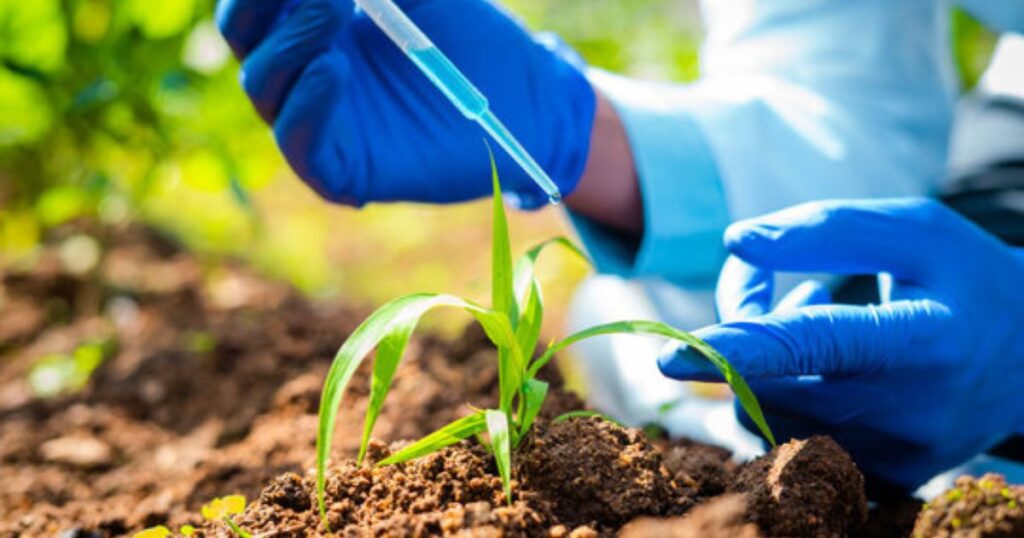 Cultural and social significance reflects the ways traditions, practices, and shared values shape communities and individual identities. It encompasses the rituals, festivals, art, and customs that define a society, providing a sense of belonging and continuity. Through storytelling, music, cuisine, and celebrations, cultures transmit knowledge, moral values, and historical memory across generations.
Cultural and social significance reflects the ways traditions, practices, and shared values shape communities and individual identities. It encompasses the rituals, festivals, art, and customs that define a society, providing a sense of belonging and continuity. Through storytelling, music, cuisine, and celebrations, cultures transmit knowledge, moral values, and historical memory across generations.
Social significance also highlights the role of social structures, relationships, and community interactions in fostering cohesion and mutual understanding. Recognizing cultural and social importance promotes respect for diversity, strengthens communal bonds, and encourages inclusive participation. Ultimately, it illustrates how human experiences, expressions, and connections contribute to the richness and resilience of societies worldwide.
Agriculture and Cultural Identity
Agriculture is deeply intertwined with cultural identity, shaping traditions, cuisines, and ways of life. In many societies, farming practices are passed down through generations, preserving knowledge and values. For example, rice farming in Southeast Asia is not only an economic activity but also a cultural cornerstone, with festivals and rituals celebrating the planting and harvest seasons.
Indigenous communities, in particular, have a profound connection to agriculture, often practicing traditional methods that are both sustainable and culturally significant. For instance, the milpa system used by Mesoamerican communities involves intercropping maize, beans, and squash, reflecting a holistic understanding of ecological balance. Preserving these practices is essential for maintaining cultural heritage and biodiversity.
Community Building and Social Cohesion
Agriculture fosters social cohesion by bringing communities together around shared goals. Farmers’ markets, agricultural cooperatives, and community-supported agriculture (CSA) programs create opportunities for interaction and collaboration. These initiatives not only strengthen local economies but also build trust and solidarity among community members.
In urban areas, agriculture is gaining traction through initiatives like rooftop gardens and community farms. These projects promote social inclusion by engaging diverse populations, including youth, immigrants, and low-income residents, in food production. They also provide educational opportunities, teaching participants about nutrition, sustainability, and the value of local food systems.
Education and Knowledge Transfer
Agriculture serves as a platform for education and knowledge transfer, particularly in rural areas where farming is a way of life. Agricultural extension services, which provide farmers with training and resources, play a critical role in disseminating knowledge about modern techniques and sustainable practices. In addition, programs that engage youth in agriculture, such as 4-H and Future Farmers of America, cultivate the next generation of farmers and agricultural innovators.
Challenges and Future Directions
The field faces multiple challenges, including rapidly evolving technologies, limited resources, and increasing complexity in global systems. Adaptation and innovation are essential to address these issues effectively. Key hurdles include maintaining sustainability, bridging knowledge gaps, and ensuring equitable access to advancements. Ethical considerations and regulatory constraints further complicate progress, requiring careful planning and interdisciplinary collaboration.
Looking forward, future directions emphasize leveraging cutting-edge research, integrating digital solutions, and fostering resilient infrastructures. Continuous learning, stakeholder engagement, and policy development will play pivotal roles. By addressing current obstacles and anticipating emerging trends, industries and societies can navigate uncertainties, optimize outcomes, and achieve long-term growth and sustainability in an increasingly interconnected world.
Addressing Inequality in Agriculture
Despite its importance, agriculture faces significant challenges, including inequality in access to resources. Smallholder farmers, who produce a substantial share of the world’s food, often lack access to land, credit, and technology. Women farmers, in particular, face systemic barriers, including limited land ownership and exclusion from decision-making processes. Addressing these disparities requires targeted policies that promote equitable access to resources and empower marginalized groups.
Technological Advancements and Innovation
The future of agriculture lies in innovation. Advances in biotechnology, such as CRISPR gene editing, hold promise for developing crops that are resistant to pests, diseases, and climate stressors. Similarly, digital agriculture, including the use of drones, artificial intelligence, and blockchain for supply chain transparency, is revolutionizing the sector. These technologies can enhance productivity, reduce environmental impact, and improve traceability, ensuring that consumers have access to safe, high-quality food.
However, the adoption of new technologies must be inclusive. In many developing countries, farmers lack the infrastructure and training needed to implement advanced tools. Bridging this digital divide requires investment in education, infrastructure, and affordable technologies tailored to local contexts.
Policy and Global Cooperation
Governments and international organizations play a critical role in supporting agriculture. Policies that promote sustainable practices, provide subsidies for eco-friendly technologies, and protect farmers’ rights are essential for the sector’s growth. Global cooperation is also vital, as agriculture is inherently interconnected with trade, climate, and food security. Initiatives like the United Nations’ Sustainable Development Goals (SDGs), particularly SDG 2 (Zero Hunger), underscore the importance of collaborative efforts to strengthen agriculture and ensure a food-secure future.
Employment and Rural Development
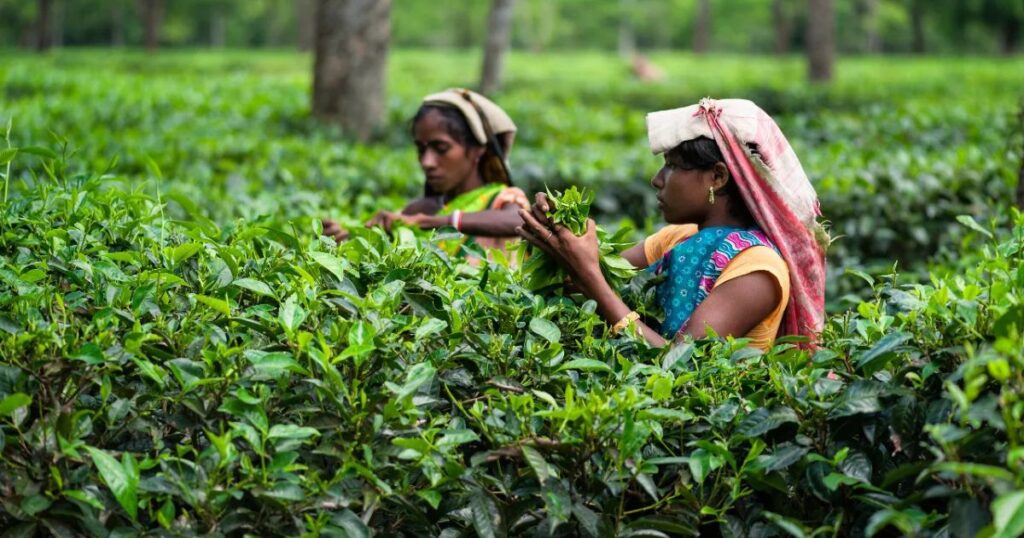 Agriculture plays a pivotal role in employment generation, particularly in rural areas where industrialization may be limited. Millions of smallholder farmers, farm laborers, and agribusiness professionals depend on agriculture for their livelihoods. By providing steady employment, agriculture helps reduce poverty, improve living standards, and stabilize communities.
Agriculture plays a pivotal role in employment generation, particularly in rural areas where industrialization may be limited. Millions of smallholder farmers, farm laborers, and agribusiness professionals depend on agriculture for their livelihoods. By providing steady employment, agriculture helps reduce poverty, improve living standards, and stabilize communities.
Rural development is closely linked to agricultural progress. The establishment of irrigation systems, storage facilities, farm-to-market roads, and extension services not only enhances productivity but also improves access to education, healthcare, and social amenities. In many regions, modern agricultural practices have transformed rural economies, reducing urban migration and fostering local entrepreneurship.
Future Directions in Agriculture
The future of agriculture hinges on sustainability, innovation, and resilience. Sustainable agriculture emphasizes efficient use of resources, biodiversity conservation, and minimal environmental impact. Practices such as precision farming, regenerative agriculture, vertical farming, and aquaponics offer solutions to produce more food with fewer resources.
Research in biotechnology, crop genetics, and climate-resilient farming is critical to developing solutions for food security in a changing climate. Policies that support smallholder farmers, ensure fair trade, and invest in rural infrastructure will be pivotal in maintaining agriculture as a driver of economic growth.
Conclusion:
Agriculture is far more than a means of producing food; it is a cornerstone of human survival, economic prosperity, and cultural identity. By ensuring food security, driving economic growth, and fostering sustainable practices, agriculture sustains both life and livelihoods. However, the sector faces significant challenges, from climate change and resource scarcity to inequality and technological disparities. Addressing these challenges requires innovation, inclusivity, and global cooperation. As we look to the future, agriculture will continue to evolve, adapting to new technologies and environmental realities while remaining a vital force in shaping a sustainable and equitable world.
FAQ:
What is Agriculture?
Agriculture is the practice of cultivating soil, growing crops, and raising animals for food, fiber, medicinal plants, and other products used to sustain and enhance human life.
Why is Agriculture Essential for Human Survival?
Agriculture provides the food and raw materials essential for human life. Without it, societies would lack the sustenance necessary for survival.
How does Agriculture Impact the Economy?
Agriculture is a significant source of income, employment, and trade. It supports industries such as food processing, textiles, and biofuels, contributing significantly to the national GDP.
What role does Agriculture play in food Security?
Agriculture ensures a stable and consistent supply of food. Effective agricultural practices prevent shortages and reduce dependency on imports.
How does Agriculture Contribute to Industrial Growth?
Crops and livestock provide raw materials for industries like sugar, cotton, dairy, and leather. This creates jobs, stimulates manufacturing, and drives economic development.



